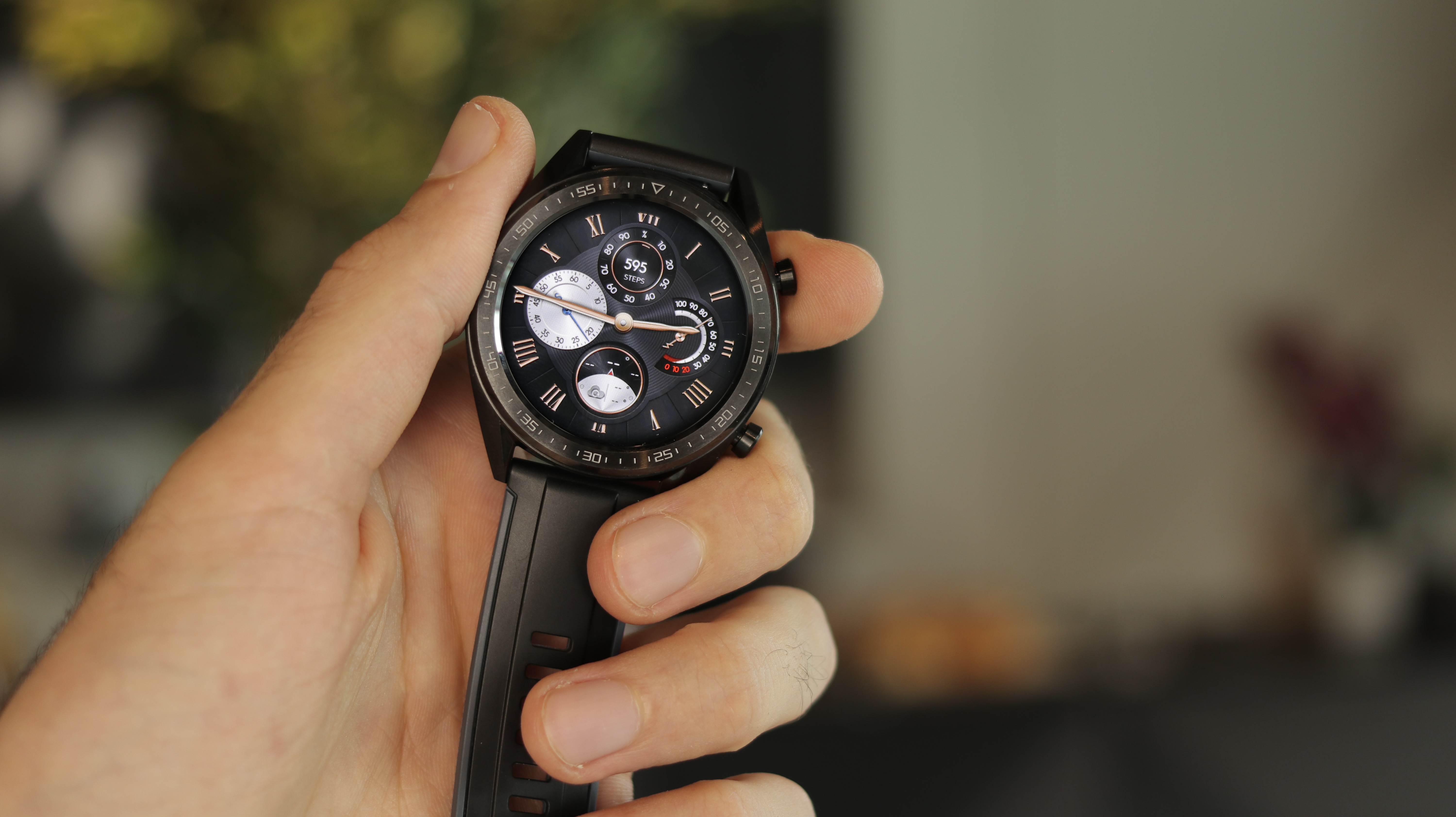Why you can trust TechRadar
Specs and performance
Exactly what’s running the Huawei Watch GT is currently a little unclear. Previous smartwatches from the company have been powered by Qualcomm wearable chipsets, but that doesn’t seem to be the case for the latest iteration of its wearables.
Instead Huawei has opted for its own system under the hood, and the exact chipset on offer here hasn’t been made clear by the company.
When we initially tested the Huawei Watch GT at its launch in late 2018 we found it prone to stuttering and slow to boot up apps, but things have been improved considerably for the full release. Everything moves smoothly under the finger, and we were never left waiting for a specific app to boot up.
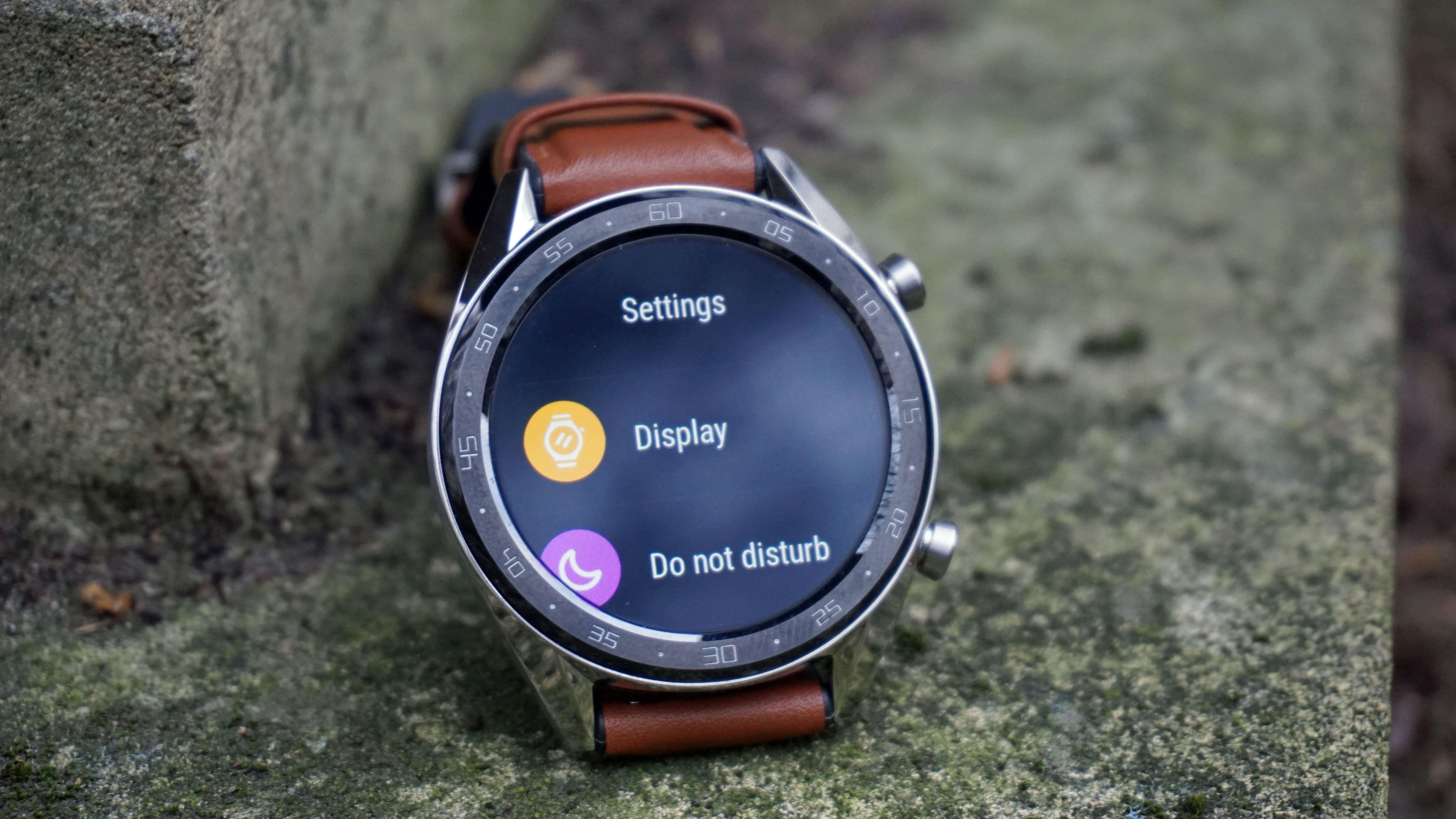
In particular, we found the GPS on this watch connects and syncs pretty much instantly, allowing you to press the button and take off on your run or cycle immediately.
We’re impressed with the speed of everything on the Watch GT, but it’s worth noting that the watch isn’t being called on to do a great deal, as the software is limited. It’s as quick as products we’ve seen from the likes of Garmin and Suunto that also offer limited functionality.
Software and app
Here's where the Huawei Watch GT appears to struggle, and it's because the company has included its own LightOS software. This isn't Wear OS or Tizen, like a lot of smartwatches from Android phone manufacturers use.
That’s not inherently a bad thing, but Huawei’s software here is particularly limited when compared to some of the more comprehensive smartwatch operating systems you can get right now. This is much more like a watch made by Garmin than it is the Huawei Watch 2, which comes with Wear OS onboard.
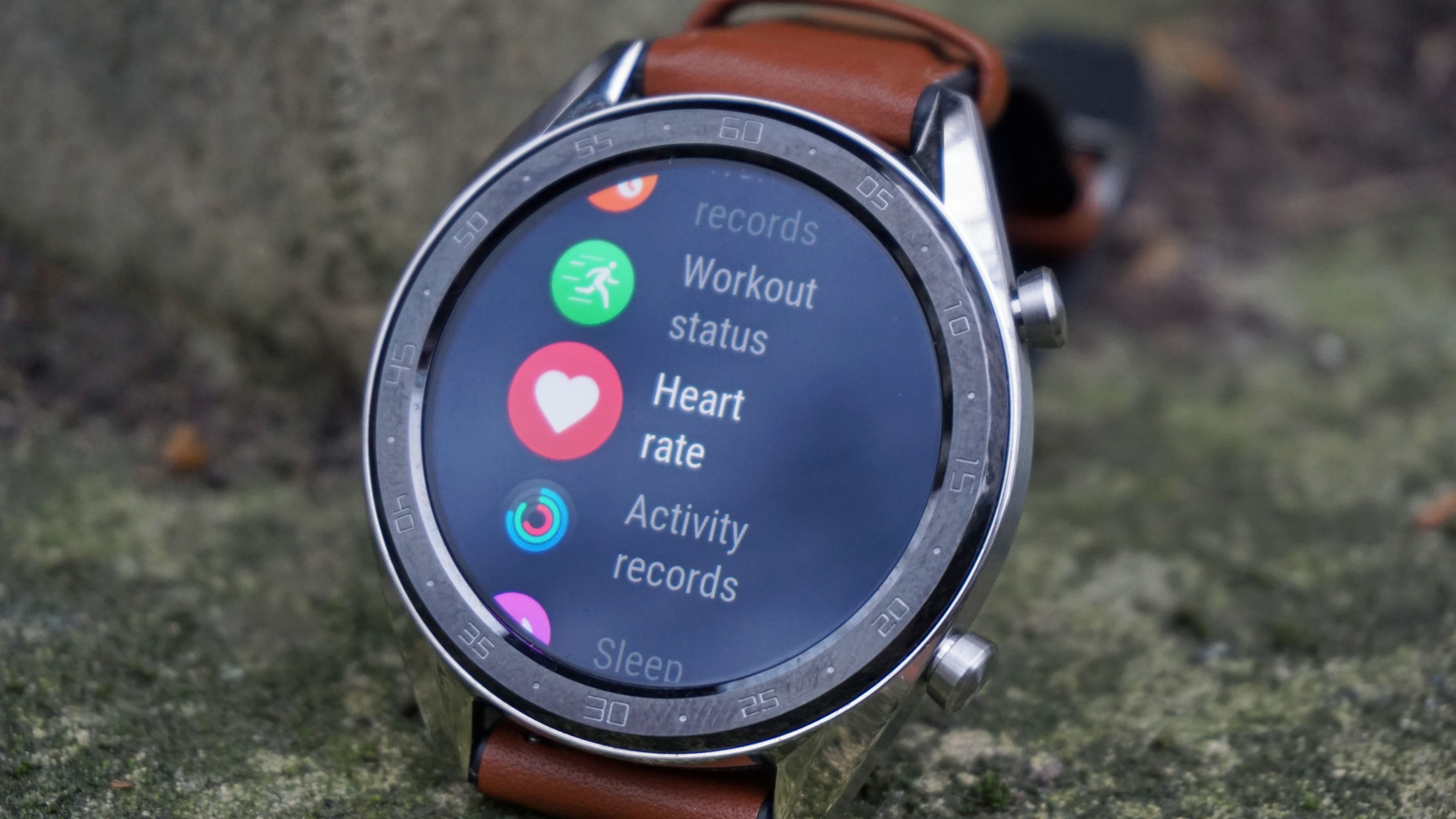
There's no support for third-party apps, and when we asked Huawei whether it was looking to introduce that support at a later date we got the impression it had no intention of doing so. That could still change, but at the moment what you see on the Watch GT is what you get.
What you do get includes lots of fitness tech, and customizable watch faces and notifications – but apart from that it's quite limited. For example, there's no Google Pay support here, as there's no NFC chipset or supporting software on the watch.
Payments from your wrist is something the likes of Garmin does offer through its Garmin Pay solution, so you may find that a bugbear of the Watch GT.
The software that comes with the Huawei Watch GT is perfectly adequate, but it isn’t going to excite anyone looking for a fully-fledged smartwatch. There’s a workout app that we’ll explore in the next section, but alongside that you’ll get apps like a compass, weather, stopwatch, timer, alarm, flashlight, a way to find your phone and more.
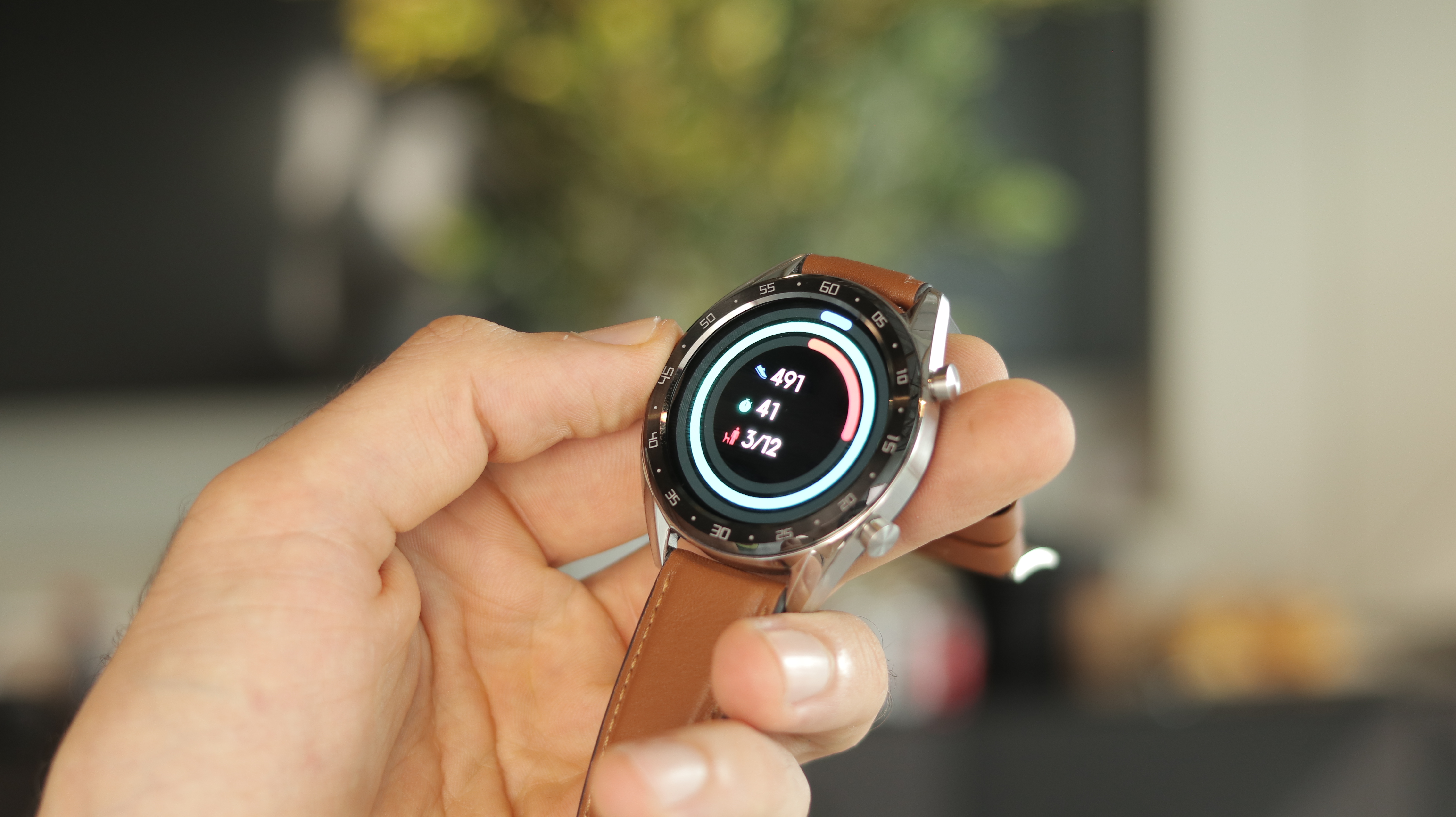
The Huawei app on your iOS or Android phone connects you to the watch and allows you to choose your specific settings, such as which apps send notifications through to your wrist. We found ourselves setting this up, and then not using the app again much.
It’s useful for setting up your watch, but it doesn’t offer particularly great insight into your fitness stats – instead you’ll be doing that a lot from the watch itself.
Notifications for third-party apps aren’t particularly well optimized for the watch, but it’ll let you know what the notification is, as well as a brief preview of the message. If you’ve missed them, you can swipe up from the bottom to see your full notifications, but there’s no way to reply to them from the watch, so you’ll have to get your phone out.
Fitness
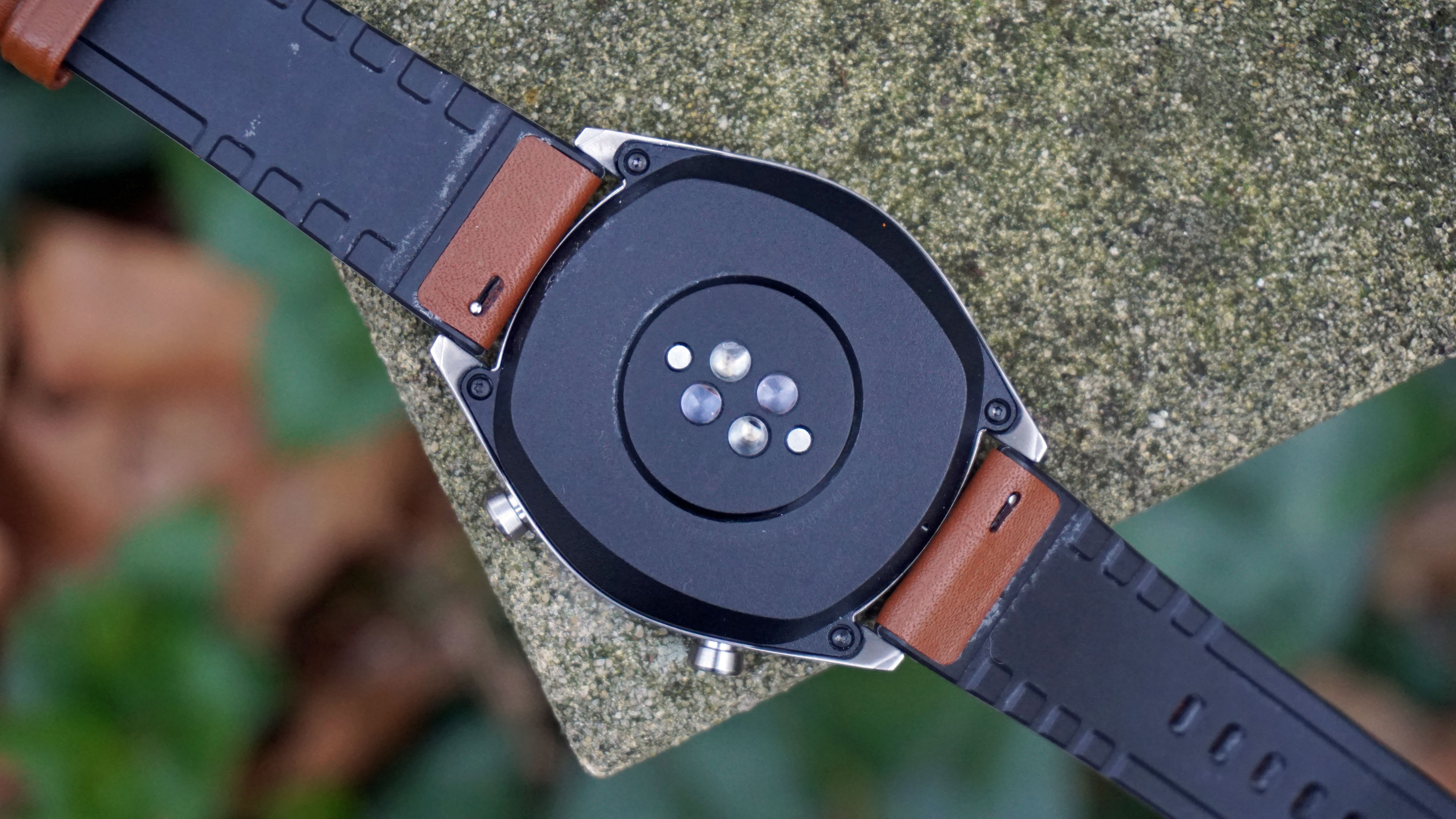
The central app on the Watch GT is called Workouts, and this offers most of the tracking capabilities outside of the normal step tracking and heart rate monitoring that’s working at all times in the background.
There are easy modes to set up called Outdoor Run, Indoor Run, Outdoor Walk, Climb, Trail Run, Outdoor Cycle, Indoor Cycle, Pool Swim, Open Water and other. The GT is 5ATM waterproof, so you can confidently wear it to track a swim.
It comes with GPS onboard too, which, as mentioned, we found connected extremely quickly.
The interface while working out with the Watch GT is also intuitive to use with your stats clearly displayed and easy to interact with. We found the tracking to be suitably accurate and in line with other smartwatches.
Battery life
Battery life is where the Watch GT gets truly exciting though. Huawei believes this watch should be able to last almost a whole month on a single charge, and we found exactly that in our testing, with the GT dropping to 50% after around two weeks of use.
We then recharged the watch, and after 10 days of solid use we found it still had 72% left in the tank.
Considering the Huawei Watch 2 needs recharging once every couple of days, this is a seriously impressive stat. Some other smartwatches can last for a similar amount of time, but it’s not something every piece of smart wristwear can achieve.
Your mileage will of course vary depending on what features you’re using. Estimates from Huawei include two weeks for mixed usage, but only around a day with full use of the GPS feature.
Image Credit: TechRadar
Current page: Specs, features and battery life
Prev Page Introduction, price and design Next Page Verdict and competitionJames is the Editor-in-Chief at Android Police. Previously, he was Senior Phones Editor for TechRadar, and he has covered smartphones and the mobile space for the best part of a decade bringing you news on all the big announcements from top manufacturers making mobile phones and other portable gadgets. James is often testing out and reviewing the latest and greatest mobile phones, smartwatches, tablets, virtual reality headsets, fitness trackers and more. He once fell over.
